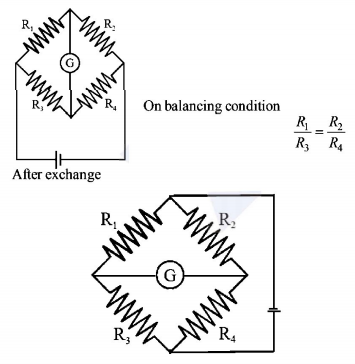41.
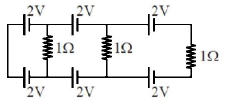
In the above circuit the current in each resistance is
A
$$0.5\,A$$
B
$$0\,A$$
C
$$1\,A$$
D
$$0.25\,A$$
Answer :
$$0\,A$$
42. An electric bulb is rated $$220\,volt - 100\,watt.$$ The power consumed by it when operated on $$110\,volt$$ will be
A
$$75\,watt$$
B
$$40\,watt$$
C
$$25\,watt$$
D
$$50\,watt$$
Answer :
$$25\,watt$$
43.
Shown in the figure below is a meter-bridge set up with null deflection in the galvanometer.

The value of the unknown resistor $$R$$ is
A
$$13.75\,\Omega $$
B
$$220\,\Omega $$
C
$$110\,\Omega $$
D
$$55\,\Omega $$
Answer :
$$220\,\Omega $$
44. A cell having an emf $$\varepsilon $$ and internal resistance $$r$$ is connected across a variable external resistance $$R.$$ As the resistance $$R$$ is increased, the plot of potential difference $$V$$ across $$R$$ is given by
A
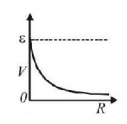

B


C
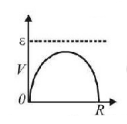

D
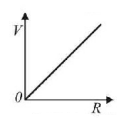

Answer :


45.
In the network shown, each resistance is equal to $$R.$$ The equivalent resistance between adjacent comers $$A$$ and $$D$$ is

A
$$R$$
B
$$\frac{2}{3}R$$
C
$$\frac{3}{7}R$$
D
$$\frac{8}{15}R$$
Answer :
$$\frac{8}{15}R$$
46. The resistance of a bulb filmanet is $$100\,\Omega $$ at a temperature of $${100^ \circ }C.$$ If its temperature coefficient of resistance be 0.005 per $$^ \circ C,$$ its resistance will become $$200\,\Omega $$ at a temperature of
A
$${300^ \circ }C$$
B
$${400^ \circ }C$$
C
$${500^ \circ }C$$
D
$${200^ \circ }C$$
Answer :
$${400^ \circ }C$$
47. Which of the following statements is false ?
A
A rheostat can be used as a potential divider
B
Kirchhoff's second law represents energy conservation
C
Wheatstone bridge is the most sensitive when all the four resistances are of the same order of magnitude
D
In a balanced wheatstone bridge if the cell and the galvanometer are exchanged, the null point is disturbed.
Answer :
In a balanced wheatstone bridge if the cell and the galvanometer are exchanged, the null point is disturbed.
48. In producing chlorine by electrolysis $$100\,kW$$ power at $$125\,V$$ is being consumed. How much chlorine per minute is liberated (ECE of chlorine is $$0.367 \times {10^{ - 6}}kg\,{C^{ - 1}}$$ )
A
$$1.76 \times {10^{ - 3}}kg$$
B
$$9.67 \times {10^{ - 3}}kg$$
C
$$17.61 \times {10^{ - 3}}kg$$
D
$$3.67 \times {10^{ - 3}}kg$$
Answer :
$$17.61 \times {10^{ - 3}}kg$$
49. The resistance of the four arms $$P, Q, R$$ and $$S$$ in a Wheatstone’s bridge are 10 ohm, 30 ohm, 30 ohm and 90 ohm, respectively. The e.m.f. and internal resistance of the cell are 7 volt and 5 ohm respectively. If the galvanometer resistance is 50 ohm, the current drawn from the cell will be
A
$$0.2\,A$$
B
$$0.1\,A$$
C
$$2.0\,A$$
D
$$1.0\,A$$
Answer :
$$0.2\,A$$
50.
In the network shown below, the ring has zero resistance. The equivalent resistance between the point $$A$$ and $$B$$ is

A
$$2R$$
B
$$4R$$
C
$$7R$$
D
$$10R$$
Answer :
$$2R$$

